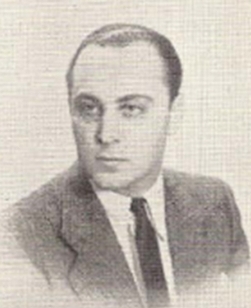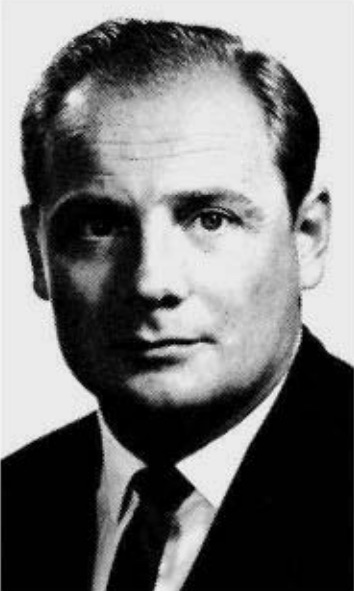I got a very nice phone call from Gerard Biagini this week. He is not digitally connected via the world wide web, but his daughter was kind enough to show him last week’s story that I wrote about my visit. Jerry called to thank me for posting the story. He was very flattered by the attention and appreciative of being remembered.
He also, however, had one note. In the article, I had stated that he was a 3-time winner of the National Team Sabre Championships in 1960 through 1962. He assured me it was only twice, 1960 and1961, and that he hadn’t fenced at all at the 1962 Nationals. Now, I thought I had done my homework correctly, but as soon as he told me, I knew I’d missed because, as I made clear in last week’s article – Jerry knows.
I checked back through American Fencing Magazine and – of course – he was correct. (September 1962, if you’re interested.) And, as usually happens when I pull up an old, old issue (I was 3 years old in Sept. 62) I found another tidbit of historical data that was pertinent to my present endeavors. The team that did win in 1962 was from the NYAC and consisted of:
Dr. Tibor Nyilas (Olympic Bronze Medalist 1948, TS-USA), the seven-time US National Champion and four-time Olympian who, at some point in his illustrious career, looked like this:
Attila Keresztes (Olympic Gold Medalist 1956, TS-Hun), who returned to Hungary not long before his death and was given a stipend by the state as a former Olympian. For the 1964 Tokyo Olympics, he looked like this:
Dr. Laszlo Pongo, a member of numerous National Championship teams and international squads, as caricatured in a 1961 Polish newspaper below:
….and Tom Orley (1954 Junior World Champion, S-Hun, 1964 Olympian, USA) who, in the 1964 USOC Olympic Book, looked like this:
Now, what do all these four above have in common? Easy – they’re all originally from Hungary. That’s significant for today’s post, as I’m finally going to let the cat out of the bag, as it were, to announce that the West Coast Fencing Archive is currently in production on its first – and possibly not last, let’s see how this goes – documentary film on yet another Hungarian, Jekelfalussy-Piller György. Or, as he was known by the Americanized version, George Piller.
Now, there’s no good reason to give too much away at this stage or you won’t want to come to the screenings or buy the DVD (with extras!). Not that any of these will be available until we’re done with the film – and we’re not done with the film. In point of fact, we’re in the midst of a long round of interviews. But we’re making a movie.
Briefly, Piller was a champion fencer from Hungary, winning the World Championships in 1930 and 1931 and the Olympic Championship in 1932. After WW2, he became a coach for the Hungarian team and they were nigh unbeatable until the 1956 Melbourne Olympics and the Hungarian Revolution, when Piller opted – along with many countrymen – not to return to Hungary. He settled in San Francisco, the Pannonia Athletic Club was built around him, he coached a number of US champions, but died at the too-young age of 61 from throat cancer.
That’s the terribly short version. So many stories have already come our way, and we’ve got a lot of people to talk to yet. I’ll try to drop some stories here once in awhile, just to keep you who are still reading up to scratch on our progress. We’re traveling to the East Coast next week and to Hungary in August. There will be much to tell, I suspect.
But let’s not forget that I started this with Jerry Biagini. Piller was Mr. Biagini’s coach for that all-too-brief time in San Francisco. During my hour talking with him that I wrote of last week, Mr. Biagini told me a story that I’d never heard before and I can’t help but share, because in an alternate universe, the future of sabre fencing in the US could have been very, very different.
If you know your sabre coach history in the US, you know that Csaba Elthes created an astonishing parade of champion sabre fencers from the 1960’s through the 1980’s. If you don’t know your sabre coach history, trust me when I say “astonishing” isn’t too strong a word to use to describe the success of Elthes’ students.
Here’s the story Jerry told me.
At the US Nationals in Berkeley in 1971, Csaba Elthes asked Jerry Biagini to get him away from the venue for a bit. His fencers were done for the moment and he needed a break. He seemed a bit sad even, so Jerry took him across the bay to San Francisco and they toured around. Csaba eventually told him what was on his mind. According to Csaba, he and Piller, prior to Piller’s illness, had been planning to find Elthes a teaching position at a club, and college or university in the San Francisco area. Piller was coaching at UC Berkeley and the Pannonia Athletic Club at the time they had this conversation. What they planned was that Elthes would come to San Francisco and start another ‘competing’ program that would allow the two of them to create fencers and push them into competition with one another to develop the strength of both programs. All came to naught of course, once Piller became ill. Elthes expressed to Jerry his disappointment that after Piller’s death, he never received a call to come to San Francisco to take over at Pannonia, which he had expected and very well may have accepted. (This would have been in 1960.) Of course, Jerry was shocked to hear this. Nothing of this plan was known to him or as far as he knows, anyone else other than Piller and Elthes.
Piller and Elthes, both based in San Francisco? The mind whirls in trying to comprehend the magnitude of such an arrangement.
What might have been, I wonder?
Csaba Elthes, second from the left and George Piller, far right.






